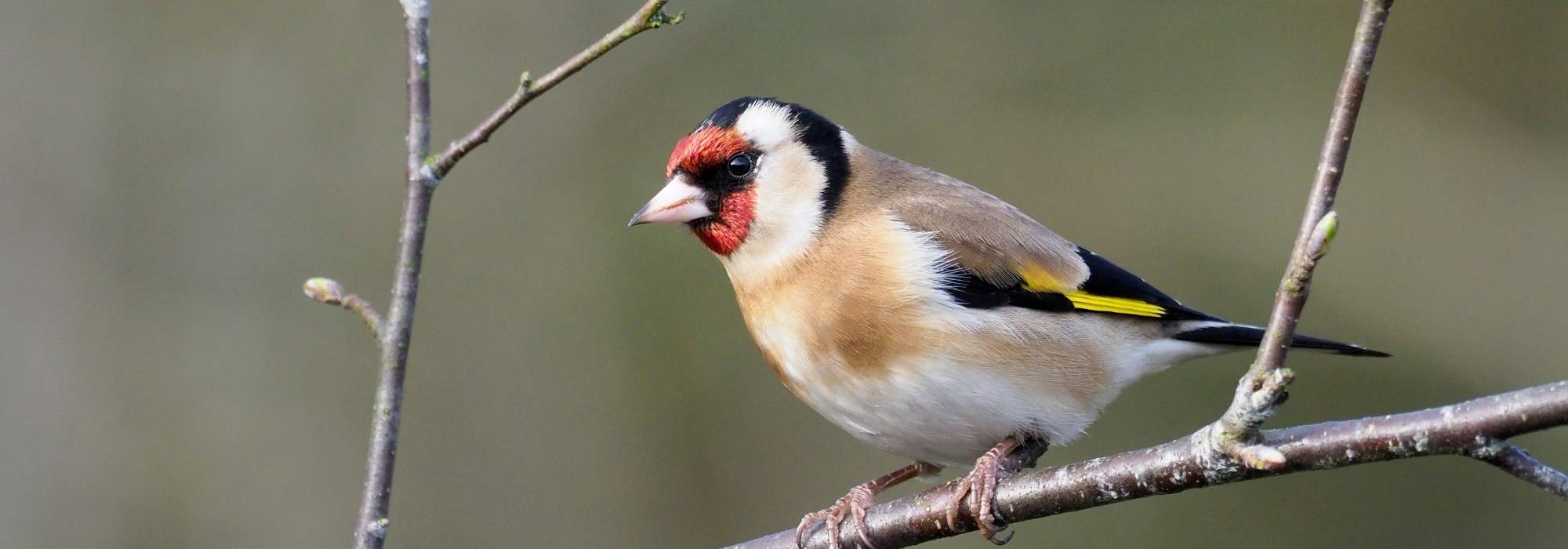
Garden Birds: How to Recognise and Attract the European Goldfinch?
Behaviour, reproduction and diet of a garden passerine
Contents
In sharp decline due to the destruction of its natural habitat and the increasing use of pesticidal products, still poached for its plumage and melodious song, the European goldfinch is a small bird of rare beauty found in our countryside. Suffice to say, it is essential to protect and properly welcome this species into your garden. It is, moreover, a protected bird, and capturing it is heavily penalised. If you’re lucky enough to spot one visiting your garden or feeders in winter, take the opportunity to observe them—it’s always a fascinating sight. Otherwise, a few single actions or planting certain vegetation can help attract this magnificent seed-eating bird.
Discover how to identify the European goldfinch, understand its lifestyle and diet, and better invite it into your garden.
How to identify the European goldfinch?
The European goldfinch (Carduelis carduelis) is a passerine bird that stands out from the crowd. In fact, it’s arguably the most beautiful garden bird we have. A member of the Fringillidae family, making it a cousin to the Eurasian bullfinch, the hawfinch, the Eurasian siskin and the chaffinch, this small bird has a short, conical and very pointed beak – characteristic of seed-eaters – and most notably, vibrantly coloured plumage. Its red crown on the face makes the European goldfinch instantly distinguishable from all other passerines. The rest of the head is black and white. Male and female are almost identical: only the size of the red patch differs. On the male, it extends beyond the eyes, whereas on the female it doesn’t.
The rest of the plumage is more subdued, coloured in brown and fawn tones. However, another distinctive feature helps identify the European goldfinch: a bright yellow stripe on the wings. In flight, it can be recognised by its white rump. Its legs are pinkish.
As for its song – highly characteristic – it’s entirely unique. Absolutely melodious and twittering, rather rapid, it incorporates “télitt-télitt” sounds and more rolling notes. Once you’ve heard the European goldfinch’s song, you’ll recognise it without fail thereafter.
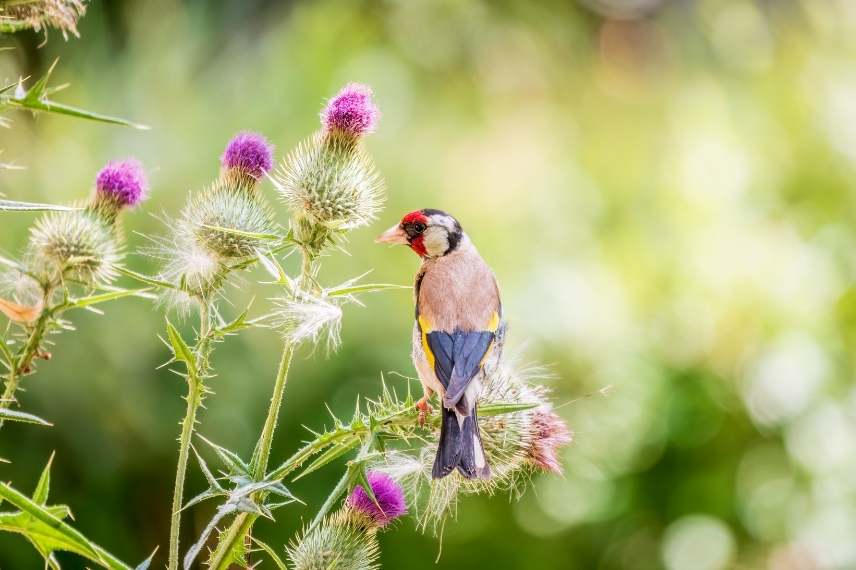
The goldfinch gets its name from the thistle, which it adores
The beautiful colours of its plumage and its pleasant song long made the European goldfinch a target for trapping and illegal capture to be sold internationally. While these practices are declining, they still occur illegally. In January 2025, a man was sentenced to 18 months in prison, with 8 months to serve, in Clermont-Ferrand.
Behaviour, Reproduction and Habitat of the European Goldfinch
The goldfinch is a rather gregarious bird that lives in large family groups. When the breeding season arrives, it tends to change its behaviour. Then, in winter, other groups form. It can thus be spotted near bird feeders, where it sometimes shows a hint of aggression towards other species.
Where do European goldfinches live?
The European goldfinch favours wooded areas and cultivated countryside, dotted with leafy, mixed or coniferous thickets. But it also frequents orchards, parks and gardens, even in urban environments. It can be found quite close to homes, especially in winter when it knows how to find food in bird feeders. During the nesting period, it may also settle in places that combine both tall bushes or trees and grassy or fallow areas, where it will find its food.
The goldfinch is largely sedentary in the southern half of the territory, while more northerly populations may migrate to warmer regions.
The European goldfinch adopts a relatively gregarious lifestyle outside the breeding season. It lives in family groups: they eat together and move together. When the nesting season arrives, pairs form and leave the group, although they never nest very far from each other. Later, when the young are able to fend for themselves, around July, they form new family groups.
The European goldfinch can travel long distances to feed… and find water, which it genuinely needs for drinking and bathing.
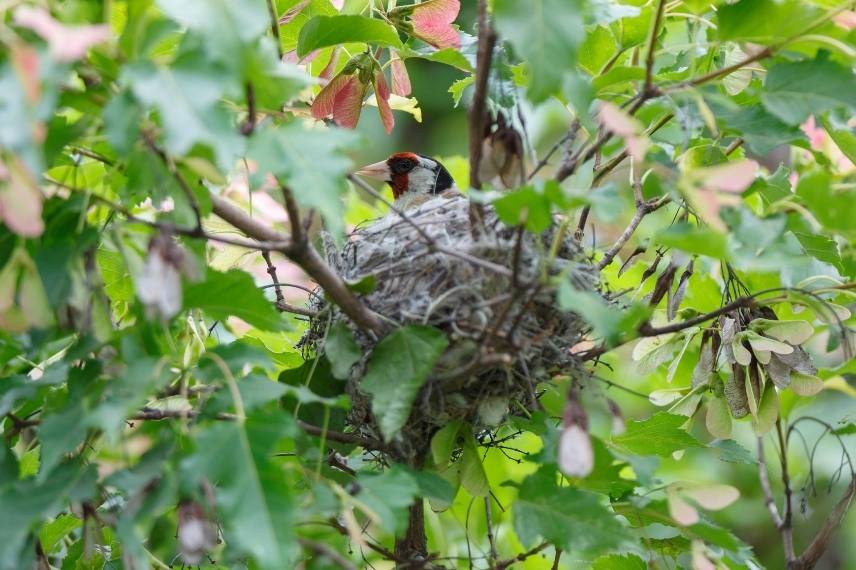
The European goldfinch builds an elaborate cup-shaped nest at the end of a branch
How do they reproduce?
It is within these groups that the courtship display begins, towards the end of winter. A display marked by wing-flapping, food offerings and noisy chases. Once pairs are formed, nesting begins. The female takes care of building the nest, often at the end of a high branch of a bush. Her cup-shaped nest is very elaborate, made of moss, grasses and chrysalises, lined with feathers, plant down, horsehair and animal hair…
The female usually lays 5 eggs in May. She incubates them for 12 to 14 days, fed by the male. As for the chicks, they are fed regurgitated seeds before leaving the nest after about two weeks. Occasionally, a few insects may be part of their diet. Two broods may follow in a single season.
What do European goldfinches feed on?
Taking a look at the etymology of the word “goldfinch,” it quickly becomes clear that this garden bird has a particular fondness for the seeds of thistle, which it skillfully husks. Suffice to say, it will include in its diet the seeds of true thistles (Carduus), Cirsium, Echinops, carline thistles (Carlina), cotton thistles (Onopordum), milk thistle (Silybum marianum), and teasel (Dipsacus fullonum).
The goldfinch is therefore a seed-eating bird. Besides thistle seeds, it delights in the seeds of other herbaceous plants such as cornflowers, sunflowers, burdock, groundsel, asters… which it picks directly from the flowers. It is said that the goldfinch consumes no fewer than 150 different plant species.
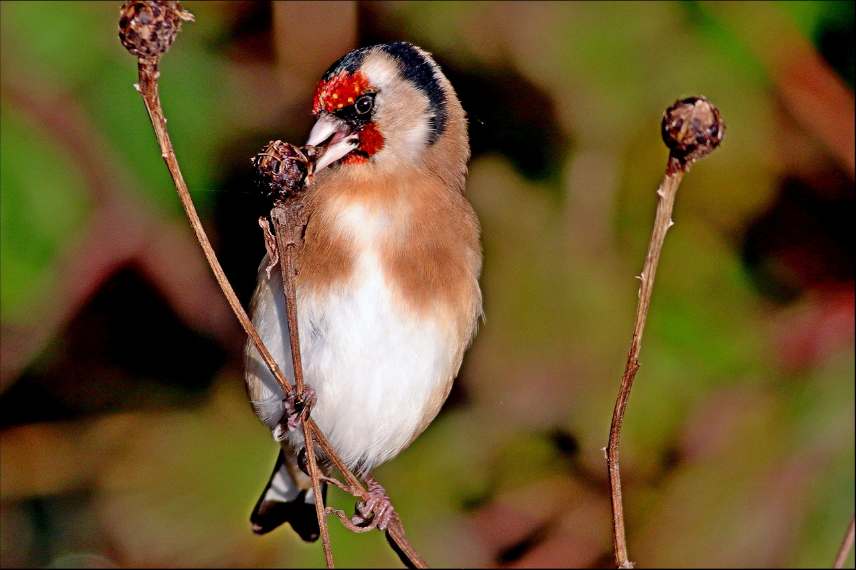
The European goldfinch can consume up to 150 different plant species
In winter, when seeds become scarcer, it will search trees for its food, particularly alders, pines, and birches… It will also approach bird feeders to eat sunflower seeds, niger, millet, safflower, buckwheat…
During the nesting period, it may catch small insects, such as aphids, caterpillars, beetles, and flies, or even ermine moth caterpillars, which it regurgitates to feed its chicks.
Like most seed-eating birds, the goldfinch has a pressing need for water to drink (granivorous birds drink much more than insectivorous birds or birds of prey, for example, because seeds contain very little water).
How to attract goldfinches to your garden?
To attract goldfinches to your garden, you need to provide them with food throughout the seasons. Most importantly, cultivate your garden organically:
- Let wild plants grow: Avoid mowing your short grass meadow too short and leave some areas of your garden fallow to allow wild plants to flower and produce seeds.
- Plant Asteraceae such as thistles, teasels, sunflowers, coneflowers, rudbeckias, asters… If you have space, sow these different species and varieties of plants in your garden, near a few tall trees. They will attract goldfinches and provide them with a natural food source. Daisies, marigolds, poppies, zinnias, cosmos, verbenas, gaura, and scabious are also among their favourite foods. Be sure to let these plants go to seed and avoid deadheading spent flowers.
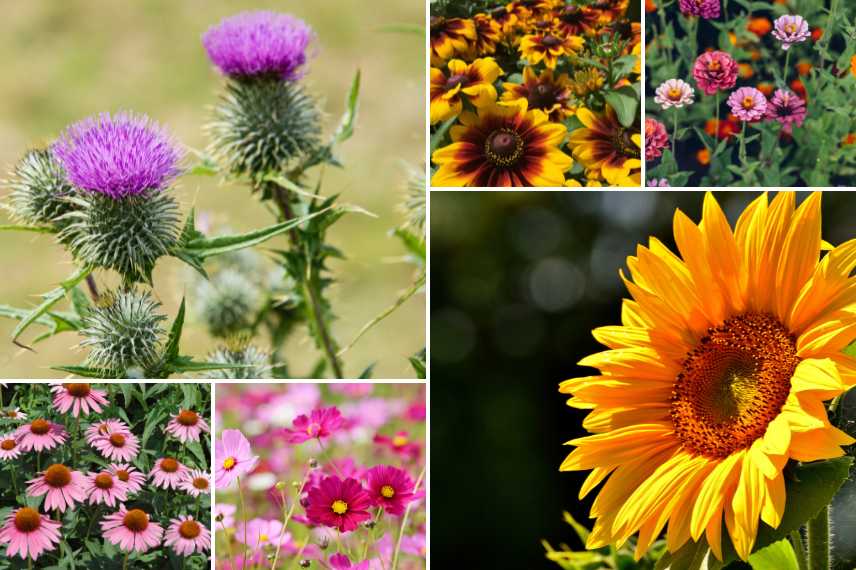
To attract goldfinches to your garden, you can sow thistles and sunflowers, as well as coneflowers, cosmos, rudbeckias, and zinnias
- Create hedges with dense, relatively tall bushes so goldfinches can build their nests there. Nest boxes are not suitable for these birds.
- Set up feeders: In winter, fill your feeders with sunflower seeds, niger, and wild bird seed mixes. However, fat balls are of no interest to them.
- Provide clean water for drinking and bathing.
- Avoid pesticides: Pesticides kill insects, which are a potential food source for goldfinches, especially during breeding season. Similarly, weedkillers destroy the plants goldfinches feed on.
To learn more: Hedges for Birds: Which Bushes to Choose?
- Subscribe!
- Contents
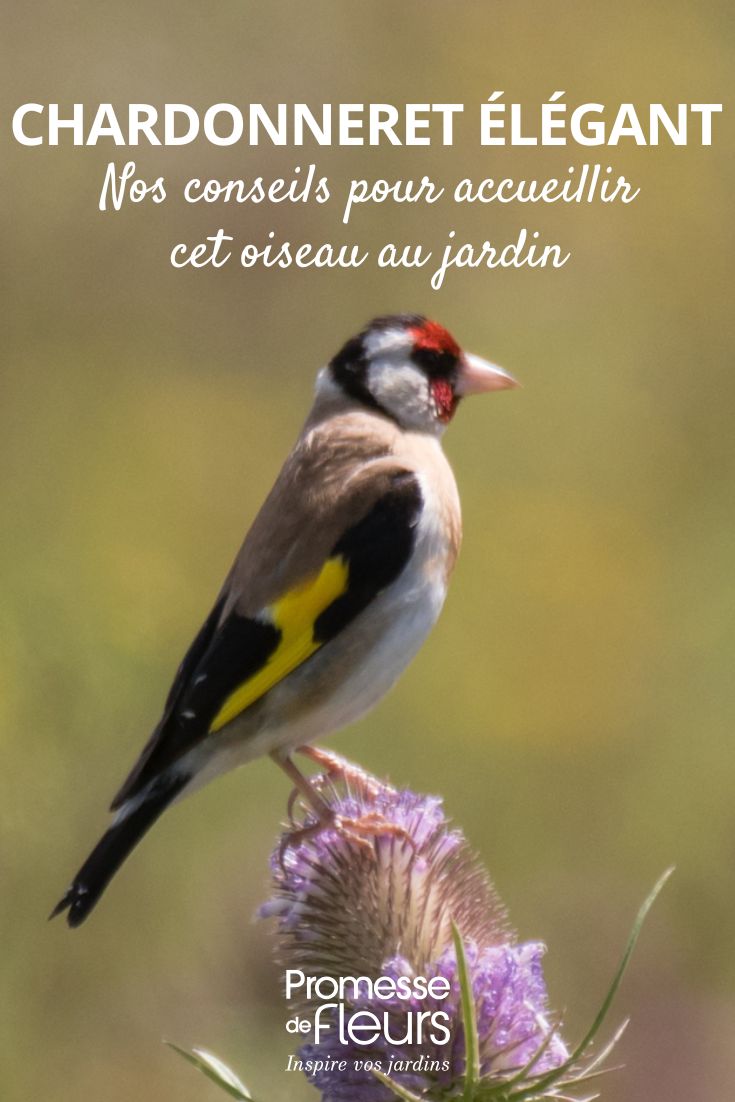































Comments